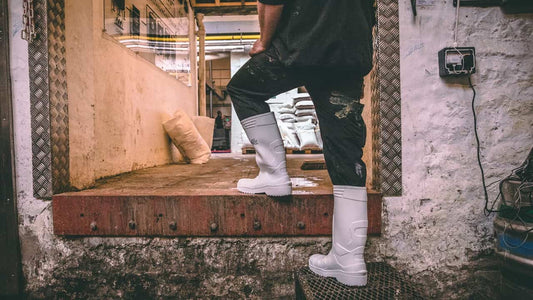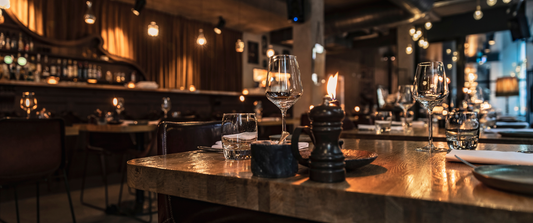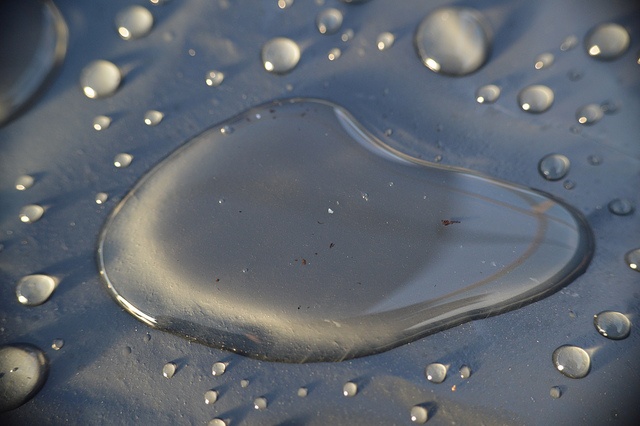When searching for slip-resistant shoes you may have seen the words "waterproof" and "water resistant" used to describe a shoes material or construction. This will have reassured you that the shoes will keep your feet dry, but there are some essential differences between the two.
Every material offers specific benefits that will will suit some professions more than others. But which should you choose and what’s the difference? We want to ensure that you choose the right footwear and have put together a guide to explain:
-
What each term means
-
Which is the most suitable protection level for your job
-
What styles offer the right protection
How to quickly spot the difference between Waterproof vs Water Resistant
Most shoes have an indication of whether they are water resistant or waterproof on the label. If they don't, waterproof shoes are often easy to spot. They are made out of a vinyl or rubber based material and will either be seamless as seen with wellington boots or have waterproof seams. If the seams are not protected the product cannot be deemed fully waterproof so always check if this is a safety requirement from your employer.
To find water resistant shoes, look at the label stitched to the inside of the shoe or at the material list in the shoe’s product description. Look for water resistant materials such as nylon, polyurethane or neoprene.
Defining the protection level
Water resistant and waterproof footwear is given an IP Rating Scale rating to show their level of water protection. You can use this rating to help you find a boot that offers the level of water protection you require. The lowest rating is IPX-0 which means the shoes offers no water protection. The highest rating is IPX-8, which means you can submerge the shoe in water and your foot will stay completely dry.
Waterproof
A waterproof shoe will be coated with a non-porous membrane that cannot be penetrated by liquids. Waterproof footwear is by definition impervious to all liquid and so is perfect for a role in food production, food service or industrial enviroments where liquids may be hazardous.
We offer many waterproof styles that would be ideal for a constantly wet environment.
Although a fully waterproof boot or shoe will not let any water in, it also will not let any water out. This could mean that your feet become moist after long periods of activity. For job roles that involve constant movement or a warmer working environment, we suggest a water resistant material.
Water Resistant
This refers to textiles and fabric designed to resist but not entirely prevent the penetration of water. The composition of water resistant footwear will usually be multi layered and offer some degree of breathability, which is great for more active roles.
A water resistant shoe can often prevent water penetrating, up to a certain contact frequency or pressure. This means that the occasional splash will be re-directed but constant contact or submersions will result in water making it through to your feet as the seams are not protected.

Such footwear may be suitable to wear in wet environments but can't be submerged in liquids for any length of time. For example our best-selling Condor Women is constructed using water-resistant leather which will repel most liquids. This would be a great choice for a restaurant role as it is lightweight, flexible and breathable.
As this shoe is breathable it suits multiple roles and is especially suitable if you work in the service industry or are a waiter or waitress. The addition of our award winning slip resistant sole makes is the perfect choice for increasing safety and comfort at work.
Visit our shop to see all our waterproof and water resistant styles
If you're not entirely sure which shoes are best for you - Our free guide will help you select the right footwear
Save money and time by finding the right work shoes - the first time - with our help guide. It's free to download!





